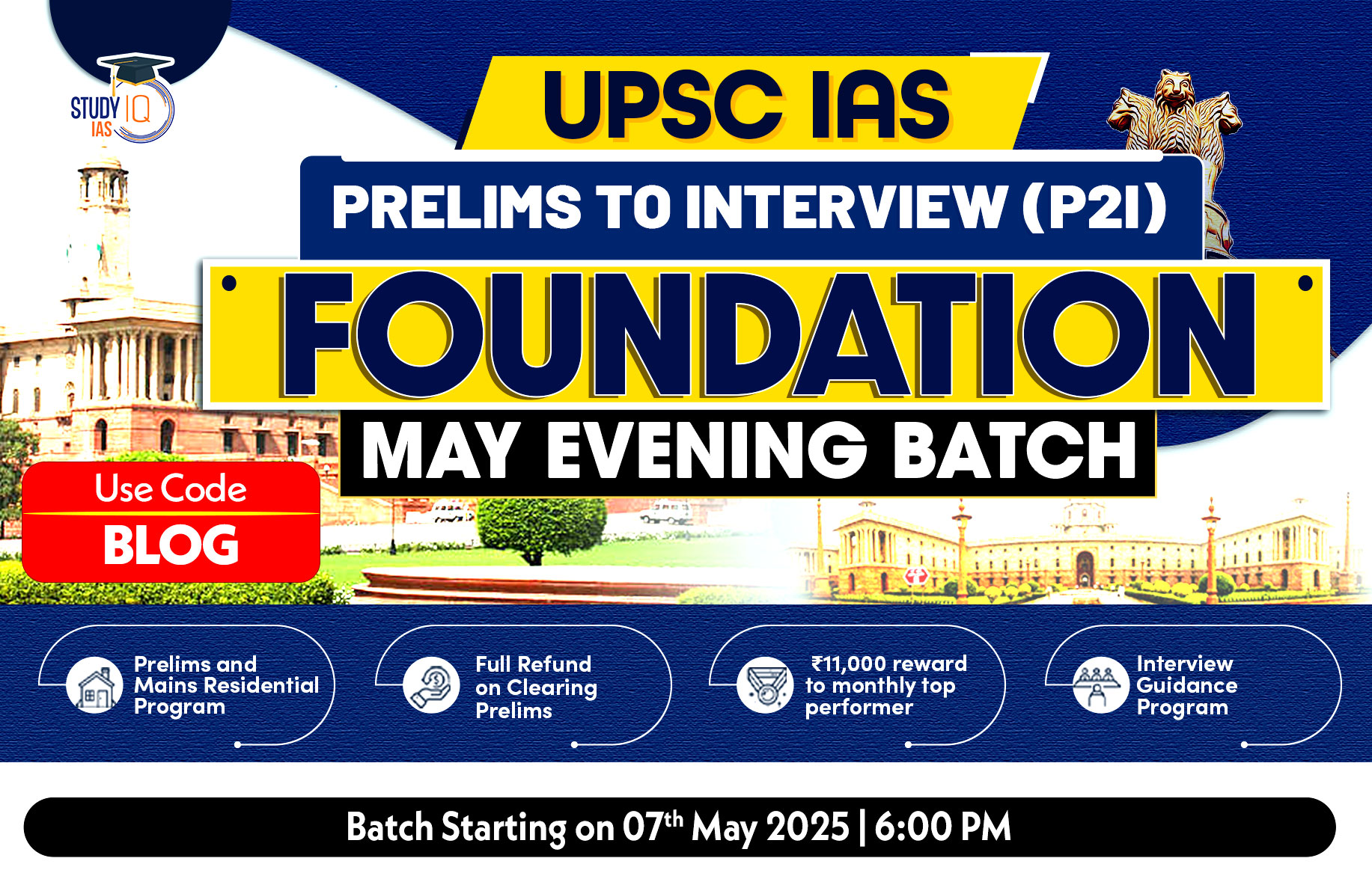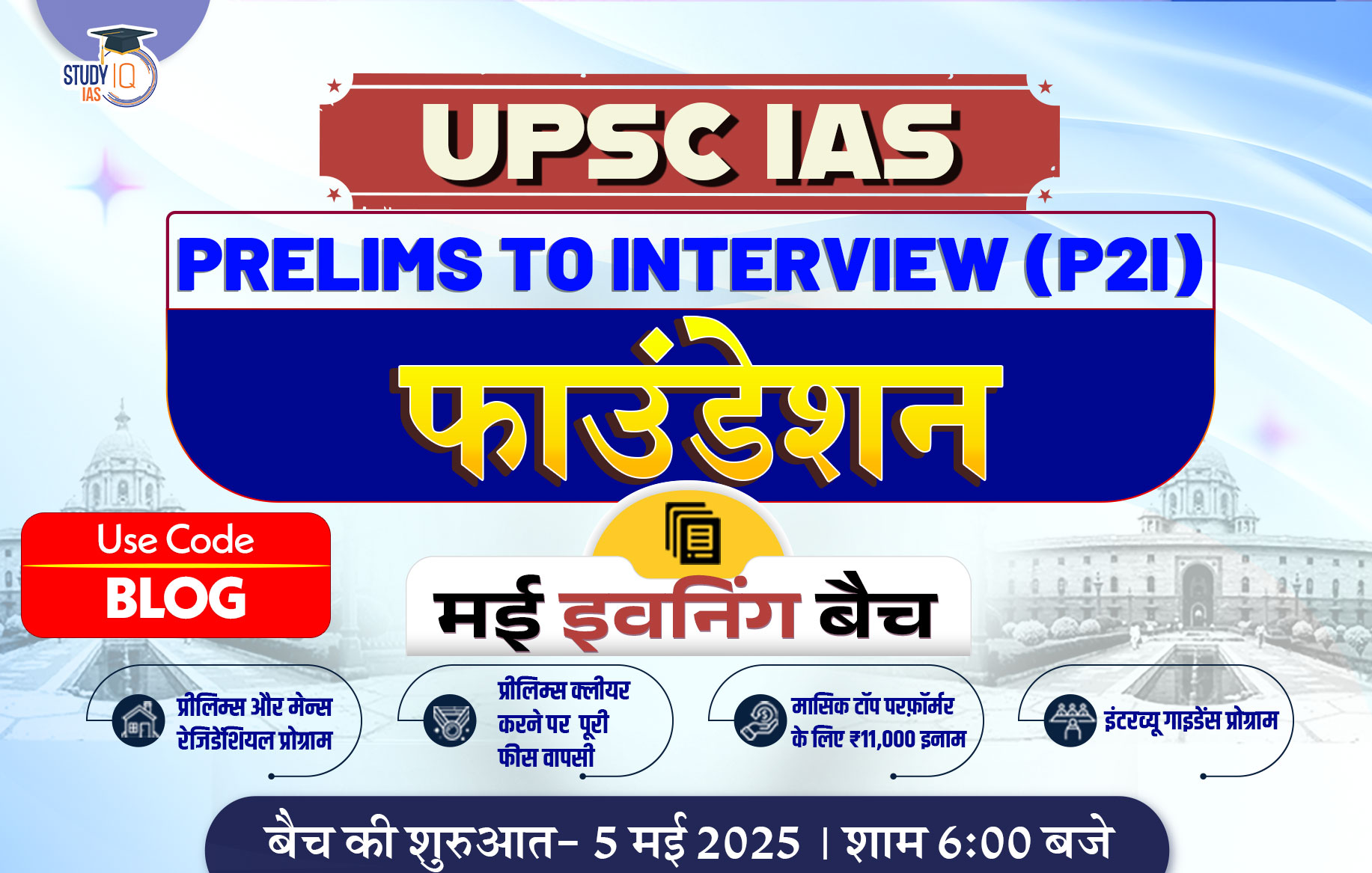Daily Quiz 16 December 2024
Quiz-summary
0 of 5 questions completed
Questions:
- 1
- 2
- 3
- 4
- 5
Information
- Click on – ‘Start Quiz’ button
- Solve Questions
- Click on ‘Next’ button
- Click on ‘Finish Quiz’ button
- Now click on ‘View Questions’ button – here you will see solutions and links.
- The test contains a total of 5 questions.
- Click on the most appropriate option to mark it as your answer.
- You will be awarded Two marks for each correct answer.
- You can change your answer by clicking on some other option.
- A Number list of all questions appears at the top side of the screen.
- You can access the questions in any order by clicking on the question number given on the number list.
- You can use rough sheets while taking the test.
- Do not use calculators, log tables, dictionaries, or any other printed/online reference material during the test.
- Do not click the button “Finish Quiz” before completing the test. A test once submitted cannot be resumed.
You have already completed the quiz before. Hence you can not start it again.
Quiz is loading...
You must sign in or sign up to start the quiz.
You have to finish following quiz, to start this quiz:
- 1
- 2
- 3
- 4
- 5
- Answered
- Review
-
Question 1 of 5
1. Question
1 pointsWith respect to ancient India, which of the following terms are most related to Buddhism?
1. Sunyata
2. Tathagata
3. Nayaputta
Select the correct answer using the code given below:Correct
Answer: A
Explanation:
● Option (a) is correct: Sunyata (or śūnyatā) is a Buddhist concept that refers to the emptiness or voidness of all things. Sunyata means that all things are interdependent and do not exist without other things and events. It’s not a negation of existence, but rather the undifferentiation from which all apparent entities arise. Sunyata is a fundamental concept in Mahayana Buddhism. It emphasizes that all things, including the self, do not have an intrinsic nature. Tathagata is a Sanskrit and Pali word that means “enlightened one”, “finder of truth”, or “one who has attained perfection”. It is a title used by the Buddha to refer to himself and other Buddhas. Nayaputta is an epithet for Mahavira, the founder of Jainism . Surviving early Jain and Buddhist literature uses several names (or epithets) for Mahavira, including Nayaputta, Muni, Samana, Nigantha, Brahman, and Bhagavan.Incorrect
Answer: A
Explanation:
● Option (a) is correct: Sunyata (or śūnyatā) is a Buddhist concept that refers to the emptiness or voidness of all things. Sunyata means that all things are interdependent and do not exist without other things and events. It’s not a negation of existence, but rather the undifferentiation from which all apparent entities arise. Sunyata is a fundamental concept in Mahayana Buddhism. It emphasizes that all things, including the self, do not have an intrinsic nature. Tathagata is a Sanskrit and Pali word that means “enlightened one”, “finder of truth”, or “one who has attained perfection”. It is a title used by the Buddha to refer to himself and other Buddhas. Nayaputta is an epithet for Mahavira, the founder of Jainism . Surviving early Jain and Buddhist literature uses several names (or epithets) for Mahavira, including Nayaputta, Muni, Samana, Nigantha, Brahman, and Bhagavan.Hint
-
Question 2 of 5
2. Question
1 points. In December 1915, he established the 1st Provisional Government of India at Kabul in Afghanistan as a government-in-exile of Free Hindustan, with himself as President. He is popularly known as “Aryan Peshwa”. He was nominated for the Nobel Peace Prize in 1932 for his role in promoting freedom and peace. Who among the following is described above?
Correct
Answer: A
Explanation:
Option (a) is correct: Raja Mahendra Pratap was an Indian freedom fighter, journalist, writer & revolutionary. He was born in December 1886 in Hathras, Uttar Pradesh. He belonged to the royal family of Mursan Estate. In December 1915, he established the 1st Provisional Government of India at Kabul in Afghanistan as a government-in-exile of Free Hindustan, with himself as President, Maulavi Barkatullah as Prime Minister, and Maulana Ubaidullah Sindhi as Home Minister. He is popularly known as “Aryan Peshwa”. He was nominated for the Nobel Peace Prize in 1932 for his role in promoting freedom and peace. He established the Prem Mahavidyalaya in Vrindavan in 1909—One of India’s first polytechnic institutes. The Vice President of India attended the 138th birth anniversary of Raja Mahendra Pratap.
Incorrect
Answer: A
Explanation:
Option (a) is correct: Raja Mahendra Pratap was an Indian freedom fighter, journalist, writer & revolutionary. He was born in December 1886 in Hathras, Uttar Pradesh. He belonged to the royal family of Mursan Estate. In December 1915, he established the 1st Provisional Government of India at Kabul in Afghanistan as a government-in-exile of Free Hindustan, with himself as President, Maulavi Barkatullah as Prime Minister, and Maulana Ubaidullah Sindhi as Home Minister. He is popularly known as “Aryan Peshwa”. He was nominated for the Nobel Peace Prize in 1932 for his role in promoting freedom and peace. He established the Prem Mahavidyalaya in Vrindavan in 1909—One of India’s first polytechnic institutes. The Vice President of India attended the 138th birth anniversary of Raja Mahendra Pratap.
-
Question 3 of 5
3. Question
1 pointsWith respect to the Farmer ID (Kisan Pehchaan Patra), consider the following statements:
- It is an Aadhaar-linked unique digital identity for farmers, linked to the state’s land records.
- It includes demographic details, crop sown information as well as the ownership data.
- It forms the foundation of the Farmer Registry, a core component of the Agri Stack under the Digital Agriculture Mission.
Which of the statements given above is/are correct?
Correct
Answer: D
Explanation:
Statements 1,2 and 3 are correct: Farmer ID (Kisan Pehchaan Patra) is an Aadhaar-linked unique digital identity for farmers, linked to the state’s land records. It includes demographic details, crop sown information and ownership data. It forms the foundation of the Farmer Registry, a core component of the Agri Stack under the Digital Agriculture Mission approved by the Union Cabinet in 2024. Digital Agriculture Mission is a government initiative aimed at developing Digital Public Infrastructure (DPI) for the agriculture sector. Agristack is a repository of all farmer information, including their identity, land records, coverage, income, insurance, loans, crop details, and revenue history. It consists of 3 databases: Farmers’ Registry, Geo-referenced Village Maps, and Crop Sown Registry.
Incorrect
Answer: D
Explanation:
Statements 1,2 and 3 are correct: Farmer ID (Kisan Pehchaan Patra) is an Aadhaar-linked unique digital identity for farmers, linked to the state’s land records. It includes demographic details, crop sown information and ownership data. It forms the foundation of the Farmer Registry, a core component of the Agri Stack under the Digital Agriculture Mission approved by the Union Cabinet in 2024. Digital Agriculture Mission is a government initiative aimed at developing Digital Public Infrastructure (DPI) for the agriculture sector. Agristack is a repository of all farmer information, including their identity, land records, coverage, income, insurance, loans, crop details, and revenue history. It consists of 3 databases: Farmers’ Registry, Geo-referenced Village Maps, and Crop Sown Registry.
-
Question 4 of 5
4. Question
1 pointsConsider the following pairs:
Port Well Known as
- Vizhinjam India’s first deepwater transshipment port
- Vadhavan Port Largest privately owned port in India
- Jawaharlal Nehru Port Largest container port in India
How many of the pairs given above are correctly matched?
Correct
Answer: B
Explanation:
- Pair 1 is correctly matched: Vizhinjam International Seaport. It is India’s first deepwater transshipment port located in Vizhinjam (near Thiruvananthapuram), Kerala. It is a transit hub where cargo is transferred from one ship to another while in transit to its final destination.It is built on a design, build, finance, operate and transfer (DBFOT) model.
- Pair 2 is incorrectly matched: The largest privately owned port in India is the Port of Mundra, located in Gujarat. The Vadhavan Port is a deep-water port being built on the west coast of India in Maharashtra. It’s part of the Sagarmala project, which aims to modernize India’s ports and connect them to the country’s hinterland.
Pair 3 is correctly matched: The largest container port in India is Jawaharlal Nehru Port (JNPT), also known as Nhava Sheva. It is located in Navi Mumbai. The port alone handles about 40% of the countries ocean cargo. The port serves as the major cargo hub for Karnataka, Gujarat, Madhya Pradesh, and Maharashtra.
Incorrect
Answer: B
Explanation:
- Pair 1 is correctly matched: Vizhinjam International Seaport. It is India’s first deepwater transshipment port located in Vizhinjam (near Thiruvananthapuram), Kerala. It is a transit hub where cargo is transferred from one ship to another while in transit to its final destination.It is built on a design, build, finance, operate and transfer (DBFOT) model.
- Pair 2 is incorrectly matched: The largest privately owned port in India is the Port of Mundra, located in Gujarat. The Vadhavan Port is a deep-water port being built on the west coast of India in Maharashtra. It’s part of the Sagarmala project, which aims to modernize India’s ports and connect them to the country’s hinterland.
Pair 3 is correctly matched: The largest container port in India is Jawaharlal Nehru Port (JNPT), also known as Nhava Sheva. It is located in Navi Mumbai. The port alone handles about 40% of the countries ocean cargo. The port serves as the major cargo hub for Karnataka, Gujarat, Madhya Pradesh, and Maharashtra.
-
Question 5 of 5
5. Question
1 pointsWith respect to Human immunodeficiency virus (HIV) and Acquired immunodeficiency syndrome (AIDS), consider the following statements:
- HIV targets the body’s white blood cells, weakening the immune system making it easier to get sick with diseases like tuberculosis.
- HIV originated in chimpanzees in West Africaand was transmitted to humans through contact with infected blood.
- HIV can be prevented and cured with antiretroviral therapy (ART).
Which of the statements given above is/are correct?
Correct
Answer: A
Explanation:
- Statement 1 is correct: Human immunodeficiency virus (HIV) is a virus that attacks the body’s immune system. Acquired immunodeficiency syndrome (AIDS) occurs at the most advanced stage of infection.HIV targets the body’s white blood cells, weakening the immune system. This makes it easier to get sick with diseases like tuberculosis, infections and some cancers.
- Statement 2 is correct: Scientists believe that HIV originally came from a virus particular to chimpanzees in West Africa during the 1930s, and originally transmitted to humans through the transfer of blood through hunting. Over the decades, the virus spread through Africa, and to other parts of the world.
Statement 3 is incorrect: There is no cure for HIV infection. It is treated with antiretroviral drugs, which stop the virus from replicating in the body. Current antiretroviral therapy (ART) does not cure HIV infection but allows a person’s immune system to get stronger. This helps them to fight other infections. Currently, ART must be taken every day for the rest of a person’s life.
Incorrect
Answer: A
Explanation:
- Statement 1 is correct: Human immunodeficiency virus (HIV) is a virus that attacks the body’s immune system. Acquired immunodeficiency syndrome (AIDS) occurs at the most advanced stage of infection.HIV targets the body’s white blood cells, weakening the immune system. This makes it easier to get sick with diseases like tuberculosis, infections and some cancers.
- Statement 2 is correct: Scientists believe that HIV originally came from a virus particular to chimpanzees in West Africa during the 1930s, and originally transmitted to humans through the transfer of blood through hunting. Over the decades, the virus spread through Africa, and to other parts of the world.
Statement 3 is incorrect: There is no cure for HIV infection. It is treated with antiretroviral drugs, which stop the virus from replicating in the body. Current antiretroviral therapy (ART) does not cure HIV infection but allows a person’s immune system to get stronger. This helps them to fight other infections. Currently, ART must be taken every day for the rest of a person’s life.
Results
0 of 5 questions answered correctly
Your time:
Time has elapsed
You have reached 0 of 0 points, (0)
| Average score |
|
| Your score |
|
Categories
- Not categorized 0%
| Pos. | Name | Entered on | Points | Result |
|---|---|---|---|---|
| Table is loading | ||||
| No data available | ||||
Sharing is caring!

 Daily Quiz 29 April 2025
Daily Quiz 29 April 2025





















